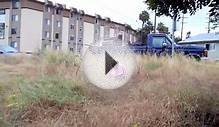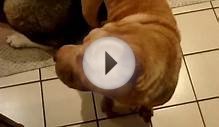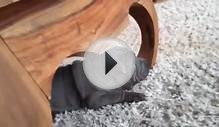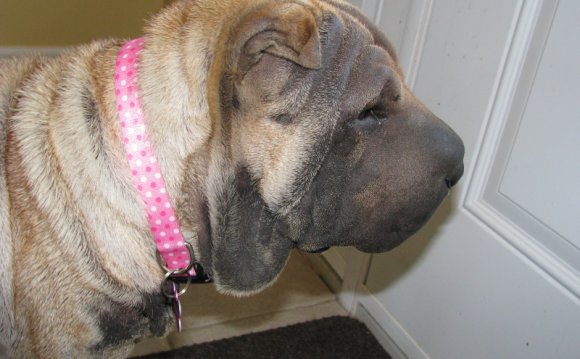
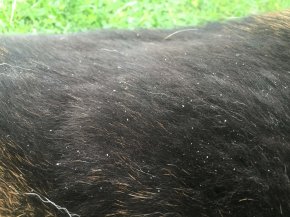 Dog dandruff (Seborrhea) is common in dogs as well as humans. Dry, flaky skin is the main symptom but it's not the only one. So let's look at all symptoms and I'll share with you how to treat this condition at home.
Dog dandruff (Seborrhea) is common in dogs as well as humans. Dry, flaky skin is the main symptom but it's not the only one. So let's look at all symptoms and I'll share with you how to treat this condition at home.
Canine Dandruff Symptoms
- Dry, flaky, itchy skin
- Thinning hair or bald areas
- Scabs, bumps, or pimples
Dandruff in dogs, or Seborrhea, is relatively easy to recognize:
Does your pooch look like he has the worst case of dandruff? Is he constantly stractching? Or maybe his hair is thinning or bald in areas?
Click here to jump to the best treatment for an itchy dog!
If any of these sound familiar, chances are your best pal is suffering from Seborrhea. AKA, dog dandruff.
I did say that flaky, dry skin wasn't the only symptom, well, dogs with dandruff may also have scabs, bumps, or pimples on their skin. These symptoms aren't as common and they won't all have this.
Dandruff in dogs has two main forms; either dry or oily. Certain breeds of dogs are prone to each one.
Breeds prone to
|
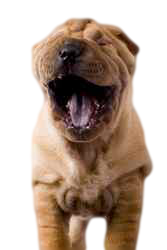 |
Breeds Prone to
|
In either case, frequent bathing with the appropriate dandruff shampoo for dogs is the best treatment. Be sure to get the right shampoo for the right type of dandruff. A dog with the dry version should be bathed with a shampoo containing sulfur, iodine or salicylic acid.
Oily Seborrhea should be treated with shampoos containing coal tar, benzoyl peroxide, or selenium sulphide.
The two shampoos that I would recommend for dog dandruff are Derma-Dyne and Tar & Sulfur. Each one can be used for both oily and dry dandruff.
Which Shampoo Should You Choose?
If your dog only has the flaky skin then I would use the Tar and Sulfur but, if you see any of the other symptoms (scabs, sores, bumps or pimples) then go for the Derma-Dyne. In either case it's best to finish with a re-moisturizing rinse to help restore your dog's skin and coat.
Here is a real "before" and "after" shot of my dog that had horrible dandruff, and them bathing him with the followed by the
How Often To Bathe Your Dog
If the dandruff is severe, then you should bathe your pet every other day for a week or even 10 days. In fact, bathe him every other day until you have removed the majority of the debris and flakes on his skin. You can then bathe him twice a week for a month and then reduce to just once a week.
Once it is finally and fully under control, you can bathe him once a month to stop dog dandruff from building up again. Luckily, it's not that difficult to treat if you get a good shampoo.
I've found the absolute best shampoo, that can be used for both oily and dry dandruff, is Nature's Specialties Tar & Sulphur. It's a medicated shampoo that has the active ingredient of non-toxic, biodegradable surfactants, with USP refined topical Coal Tar Solution.Cheyletiella (Walking Dandruff)
So, you checked your pet and noticed that he has dandruff. But wait. When you looked closely, it moved!
Yes, that's right. There is a skin condition known as walking dandruff (Cheyletiella) and that's exactly what it looks like. So, if your pooch has large dandruff flakes, check to make sure they're not moving!
Cheyletiella are mites that live on dogs, cats, and unfortunately, even live on people. These are easy to see and your usual flea treatment should get rid of them. If you have an infected animal in the house though, be sure to treat all other animals.
Also, if you develop an itchy rash after handling your infected pet, speak to your doctor and tell her you may have contracted mites yourself (ugh). Your doctor will be able to prescribe the proper treatment though.
Remember, if it looks like your dog has dandruff, make sure you know its Seborrhea for sure before starting the baths as it could be those pesky mites, Cheyletilla.
YOU MIGHT ALSO LIKE
